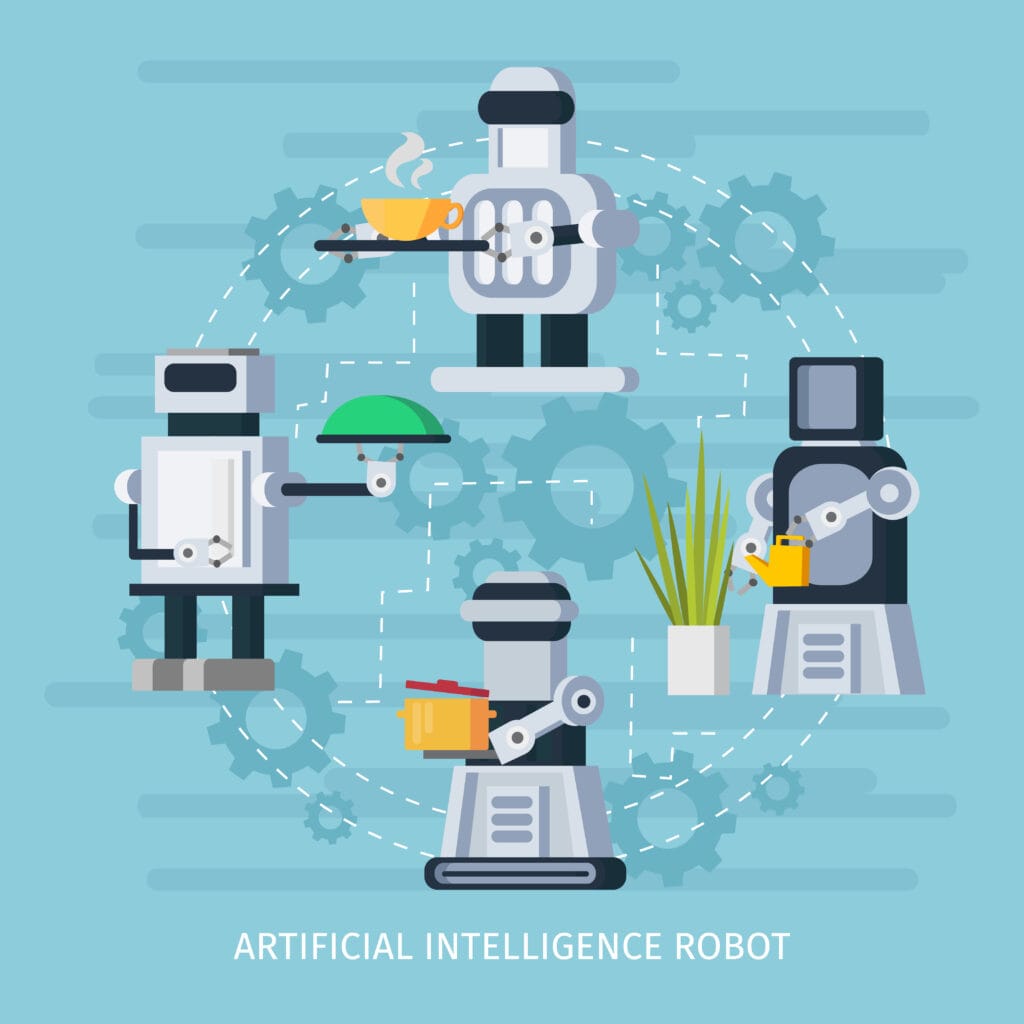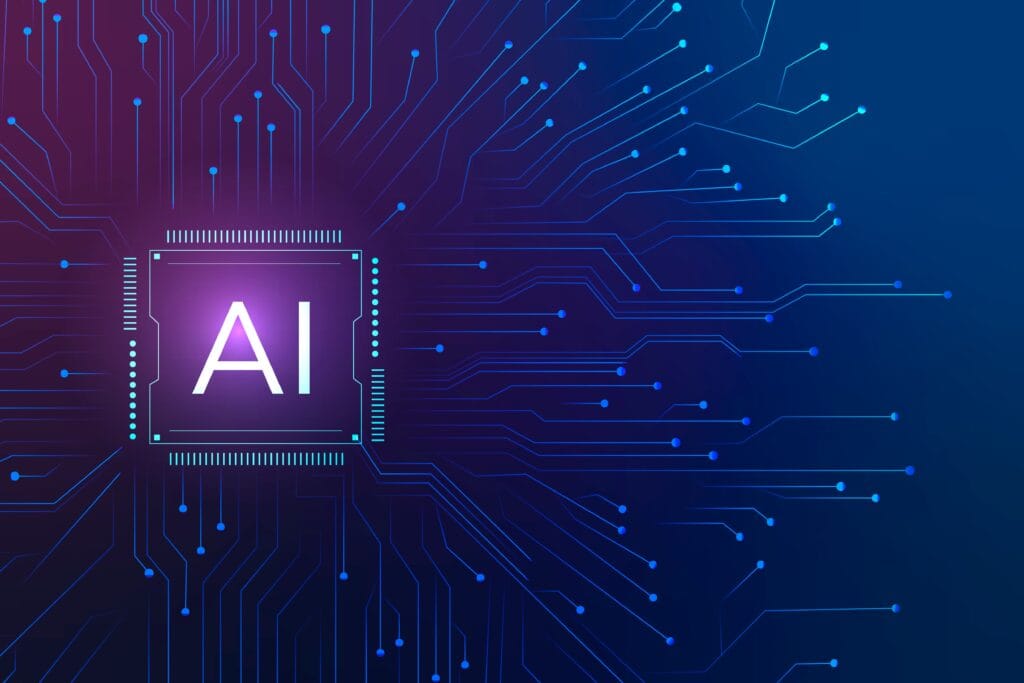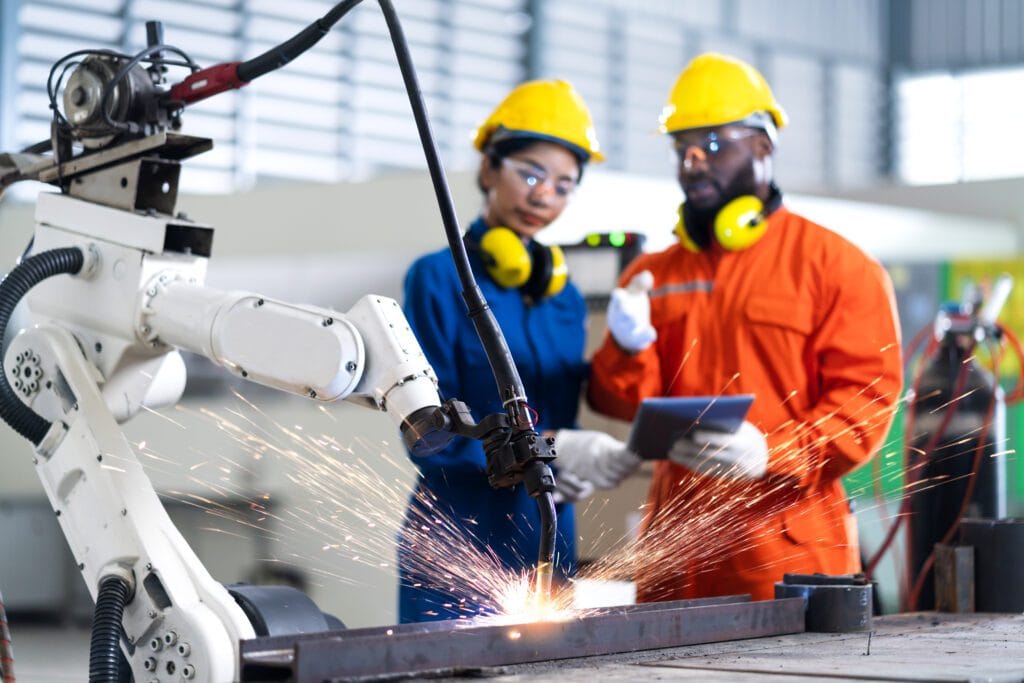Introduction: The Fusion of Artificial Intelligence and Robotics
In 2025, robotics is no longer limited to mechanical arms or pre-programmed routines. The true revolution lies in Artificial Intelligence (AI) — the brain that transforms robots from mere machines into decision-making, adaptive systems.
AI gives robots the ability to sense, think, and act — making them capable of learning from experience, understanding their environment, and performing complex tasks with human-like precision. From warehouse automation to autonomous vehicles and AI-driven surgical systems, the combination of Robotics and AI is redefining what’s possible.
In this blog, we’ll go deeper into how AI technologies such as Machine Learning, Computer Vision, Natural Language Processing, and Reinforcement Learning power intelligent robots — and how you can understand and explore them through DIY learning.
What Makes a Robot “Intelligent”?
A traditional robot follows predefined instructions. If it encounters something unexpected, it stops or fails. But an AI-powered robot uses perception, learning, and reasoning to adapt and continue working — even in uncertain conditions.

Let’s imagine a warehouse robot navigating aisles filled with boxes. Without AI, it can move only along fixed routes. But with AI and sensors, it can:
- Recognize obstacles in real time.
- Plan alternate routes dynamically.
- Identify and manage inventory autonomously.
This adaptive behavior is what we call “intelligence” in robotics — the seamless integration of AI algorithms with mechanical systems.
The Four Pillars of AI in Robotics
To truly understand AI-powered robotics, let’s break down its four core AI capabilities — each serving as a foundation for intelligent behavior.
1. Machine Learning (ML): Robots That Learn from Experience
Machine Learning allows robots to analyze data from past tasks and improve performance without being explicitly reprogrammed.
For example, a robotic arm in a manufacturing plant can analyze sensor data from thousands of assembly cycles. It can then predict the ideal grip pressure or identify the cause of an error automatically.
💡 DIY Insight:
Try training a simple robot with an Arduino or Raspberry Pi to recognize objects or follow a line more efficiently after multiple trials. This is applied learning in action.
How It Works:
- The robot collects data (sensor readings, images, speed, etc.).
- The AI model analyzes the data to find patterns.
- The robot adjusts its movements or actions based on those patterns.
Key Python Libraries for ML in Robotics:
- Scikit-learn
- TensorFlow
- PyTorch
2. Computer Vision: Giving Robots the Power to See
Computer Vision enables robots to interpret and understand visual data from cameras and sensors.
Robots equipped with vision can detect objects, navigate environments, and even recognize faces or gestures.
Practical Example:
A warehouse robot equipped with cameras can identify whether a shelf is full, locate a specific box, or detect a fallen object blocking its path — all without human help.
How It Works:
- The robot captures images or video.
- The AI model processes the frames to detect edges, colors, and shapes.
- Algorithms like Convolutional Neural Networks (CNNs) classify what the robot sees.
Python Tools for Computer Vision:
- OpenCV
- Keras
- TensorFlow Lite
💡 DIY Project Idea:
Build a Smart Surveillance Bot using Raspberry Pi and OpenCV to detect human motion or track a specific color object. This introduces you to real-time image processing and object recognition.
3. Natural Language Processing (NLP): Communicating with Robots
NLP helps robots understand and respond to human language — both written and spoken.
When you say “Hey Robot, bring me the red cup,” NLP enables the system to process your command, identify the object, and perform the action.
Real-World Example:
In hospitals, AI-based robotic assistants use NLP to interact with patients — reminding them to take medicine or answering basic health queries.
How It Works:
- NLP algorithms break down speech into components (tokens).
- The AI model interprets the meaning and intent.
- The robot performs an action based on recognized instructions.
Python Libraries for NLP in Robotics:
- NLTK
- spaCy
- Transformers by Hugging Face
💡 DIY Practice:
Create a voice-command robot using Python’s speech_recognition library and Arduino — capable of responding to basic voice prompts like “move forward” or “turn left.”
4. Reinforcement Learning: Teaching Robots Through Trial and Error
Reinforcement Learning (RL) is like teaching a child through experience — rewarding good actions and discouraging bad ones.
In robotics, RL enables machines to learn optimal behavior by interacting with their environment.
Example:
An AI robot vacuum cleaner uses RL to learn efficient cleaning paths while avoiding obstacles. Every time it avoids hitting a wall, it gets a “reward.”
How It Works:
- The robot performs an action (move forward, turn, stop).
- It receives feedback from the environment (collision, success).
- The algorithm adjusts future actions to maximize positive results.
Popular RL Frameworks:
- OpenAI Gym
- Stable Baselines3
- TensorFlow Agents
💡 DIY Exploration:
Simulate a maze-solving robot using Python and OpenAI Gym — where the robot learns by trial and error to reach the goal faster with each attempt.
Real-World Applications of AI in Robotics
Now that you know how each capability works, let’s explore how industries are using AI-driven robots today.
1. Warehouse Robots: Smarter Logistics and Inventory Management
AI-powered warehouse robots are transforming logistics by automating sorting, packing, and inventory tracking.
How AI Helps:
- Computer Vision detects and identifies parcels.
- Reinforcement Learning optimizes route paths for faster delivery.
- Machine Learning predicts maintenance needs and workload balancing.
📦 DIY Tip:
Try simulating a warehouse using Python’s pygame or ROS where bots pick and place items based on object detection algorithms.
2. Healthcare Robots: Precision and Assistance
In modern hospitals, AI-assisted surgical robots perform delicate procedures with unmatched precision.
They use a mix of computer vision and sensor data to identify tissues and make accurate incisions. Similarly, AI nursing bots use NLP to interact with patients compassionately.
AI Benefits:
- Real-time monitoring of patient vitals.
- Remote-controlled surgery with AI safety layers.
- Personalized patient engagement via chatbots.
3. Autonomous Vehicles: The Peak of Intelligent Robotics
Self-driving cars are the ultimate blend of AI and robotics. They perceive the environment, make real-time decisions, and navigate safely — all autonomously.
AI Components Involved:
- Computer Vision: Detects pedestrians, vehicles, and signals.
- Reinforcement Learning: Optimizes driving behavior.
- Sensor Fusion: Combines data from LiDAR, cameras, and GPS.
💡 DIY Project Idea:
Use Python and TensorFlow to simulate a self-driving mini car in a virtual environment like CARLA Simulator. It’s a great way to experiment with path detection and control.
🧩 Connecting AI to Robotics Hardware
AI algorithms don’t exist in isolation. To function, they must connect with hardware like motors, sensors, microcontrollers, and cameras.
Popular hardware platforms that support AI in robotics:
- Arduino — for sensor data and movement control.
- Raspberry Pi — for edge AI and camera vision.
- Jetson Nano — NVIDIA’s compact AI computer for robotics.
💡 Tip for Beginners:
Start small — build a camera-based line follower robot using Raspberry Pi. Then, scale up by integrating ML models for decision-making.
🧰 Tools and Frameworks for AI in Robotics
Here are some of the most useful tools to explore if you’re building AI-based robotics projects:
- TensorFlow — Deep learning framework.
- ROS (Robot Operating System) — Standard framework for robotics integration.
- OpenCV — For computer vision.
- PyTorch — For ML experimentation.
- Arduino IDE — For microcontroller programming.
- Raspberry Pi Documentation — For AI edge computing setups.
💡 Final Thoughts: The Future of AI-Driven Robotics
The convergence of AI and Robotics is accelerating innovation in every domain — manufacturing, logistics, healthcare, education, and smart homes.
For learners and creators, 2025 is the best time to start exploring DIY robotics with AI. You don’t need expensive labs — just a curious mind, a Raspberry Pi, and Python.
As you move forward, remember:
“Every intelligent machine starts as a DIY idea.”
Keep experimenting, keep learning, and keep building the robots of the future with AI-powered intelligence.


